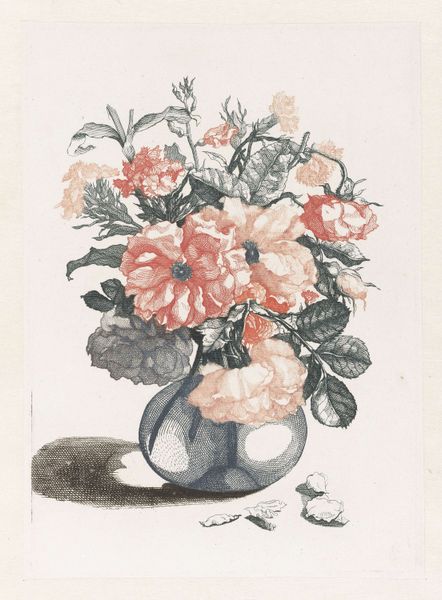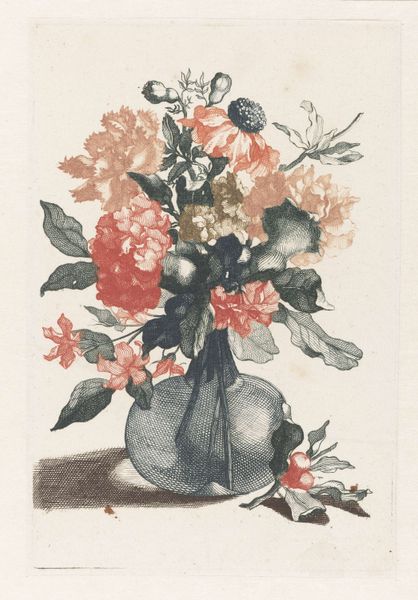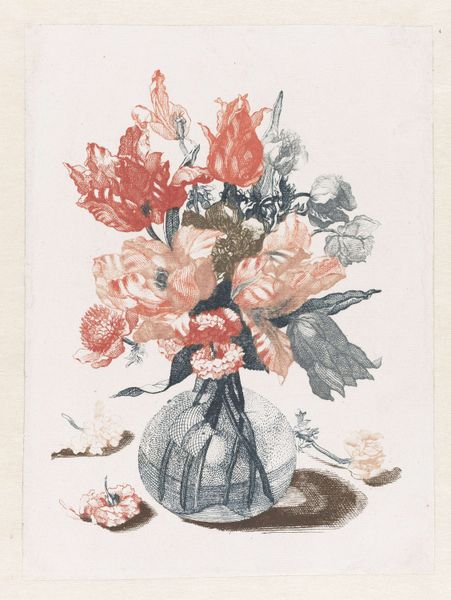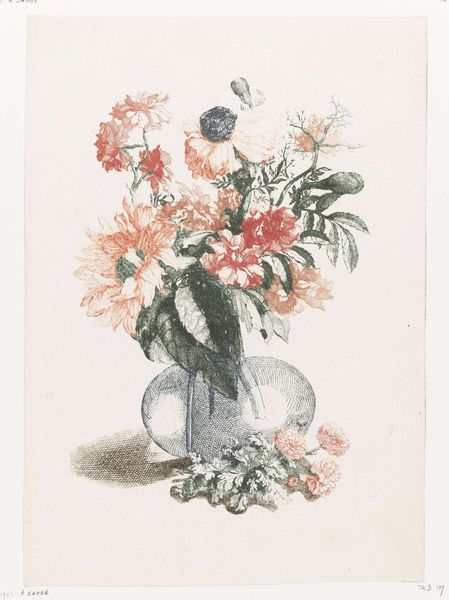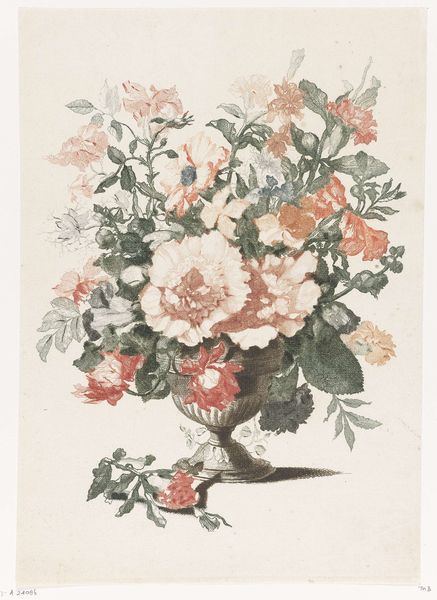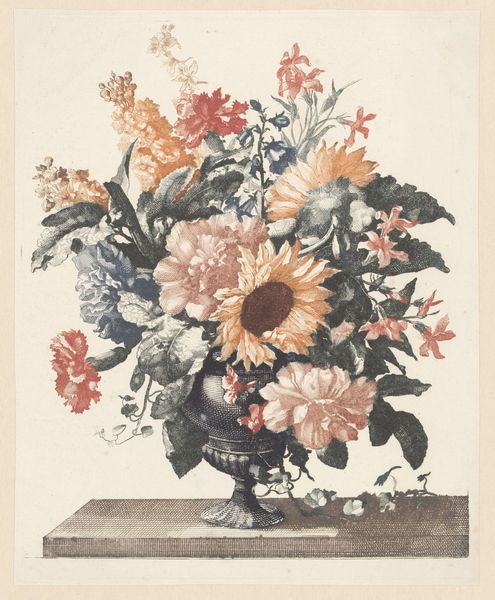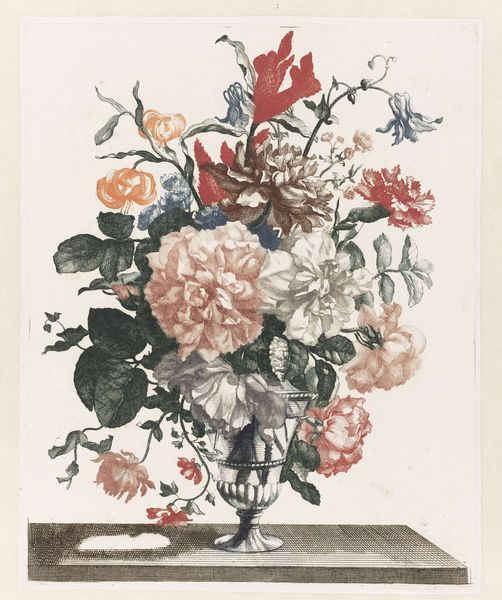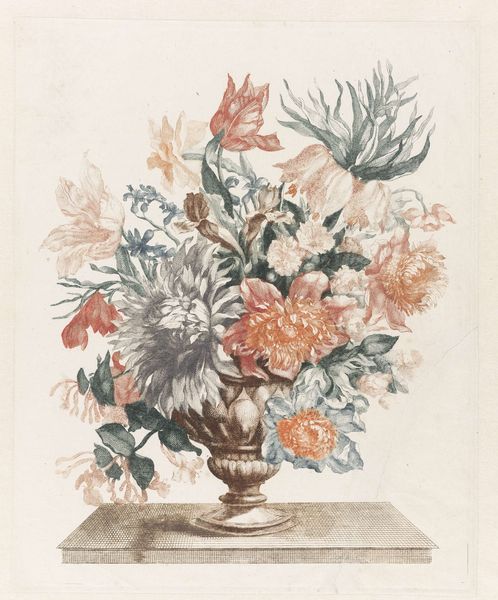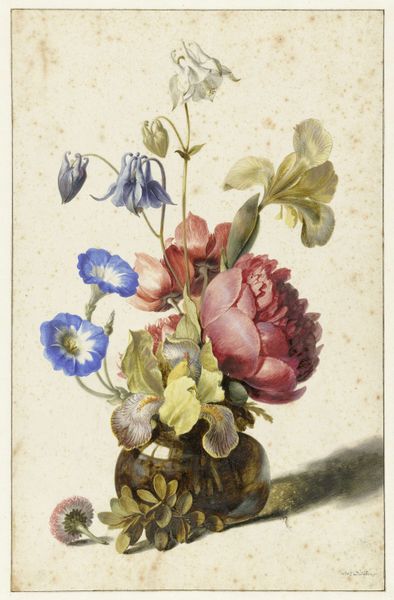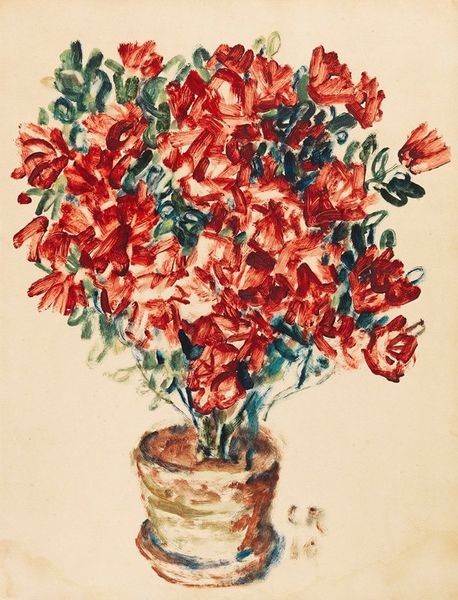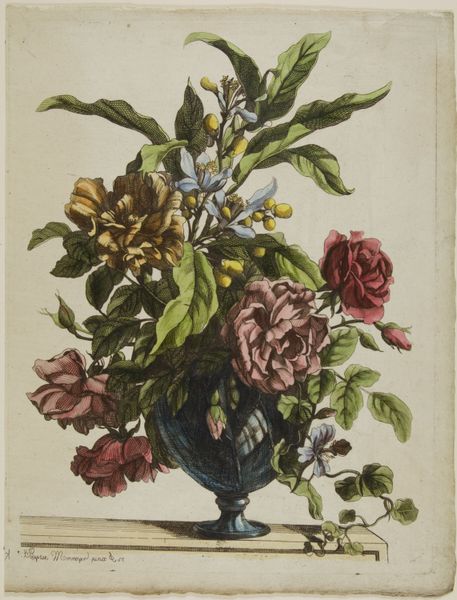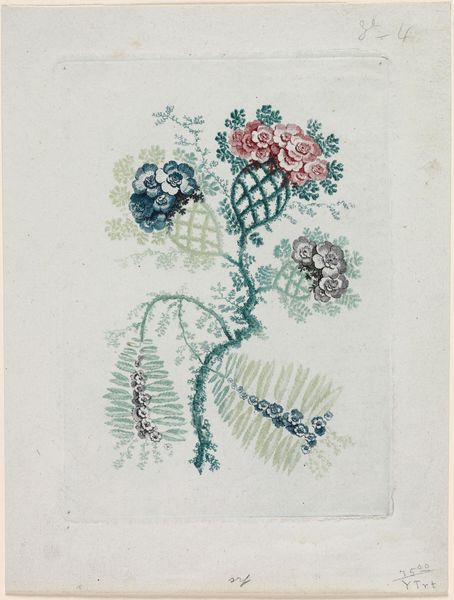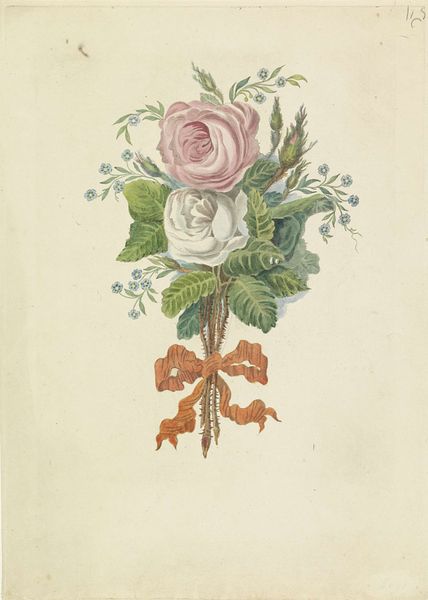
print, etching, engraving
#
baroque
# print
#
etching
#
decorative-art
#
engraving
Dimensions: height 207 mm, width 159 mm
Copyright: Rijks Museum: Open Domain
Editor: So, here we have *Five Prints of Flowers in Glass Vases*, a decorative print made sometime between 1688 and 1698, by an anonymous artist. It looks like etching and engraving. What really jumps out at me is the arrangement. How flowers burst forth but seem slightly faded. How would you interpret this work, particularly the choice of imagery? Curator: Well, I find this still life incredibly evocative. Notice how the ephemeral nature of the flowers clashes against the seemingly permanent glass vase. Flowers in art are often a coded visual language. Here, you might consider them a symbol of vanity, love, the transience of beauty or even human life and resurrection; this cultural code can tell us more about the work and perhaps even about its patron. It could serve as a memento mori – a reminder of our mortality. Does the somewhat morbid effect translate over to you? Editor: Yes, I get that. The blooms, some drooping, reinforce that fleeting beauty aspect. How would the arrangement itself speak to these ideas, however? Curator: Think about the cultural memory embedded in floral arrangements of the time. Each choice carries symbolic weight, revealing layers of meaning. Do you see that one central flower acting almost as the soul of this composition, and the way it contrasts with the fallen blossoms below? Does it conjure the natural cycle of life, or an allegory on resurrection and eternal soul? Editor: That's insightful. I hadn’t considered that each flower and its placement might act as a key, or word within an image. It makes me think of vanitas paintings, now! I'm glad I asked about the imagery in particular, though it might still take a good historian to translate what these choices actually were trying to express. Curator: Precisely. Visual symbols act as bridges to the past. Investigating their psychological and cultural nuances illuminates the intricate dance between art, memory, and meaning.
Comments
rijksmuseum about 2 years ago
⋮
Johannes Teyler from Nijmegen was educated as a philosopher and mathematician, but also worked later as a military engineer. He invented a method for printing impressions in colour, for which he received a patent in 1688. The colours had to be applied to the copper plate by hand for each individual impression. Because this was very labour intensive, his colour printing process found little following.
Join the conversation
Join millions of artists and users on Artera today and experience the ultimate creative platform.
